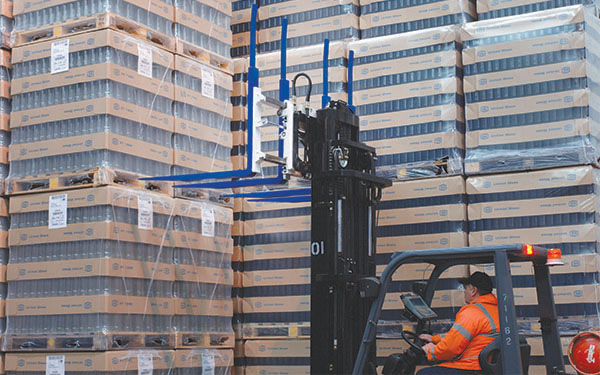Lift Truck Tips: Attachments work smarter, not harder
Parallel to advances in lift truck sophistication, attachment manufacturers have worked to make their products more intelligent efficient and user-friendly
In recent years, lift truck innovation has progressed at an unprecedented pace, transforming the warehouse workhorse from a blunt instrument to a precise tool. Energy-efficient, increasingly customized and easier to maintain, the lift truck is also expected to provide unprecedented performance. Attachment manufacturers have been working to keep up with customer expectations in a highly competitive market with zero tolerance for waste.
“Customers are working hard at improving operational efficiency and lowering overall costs. Two key points of this effort are reducing product damage and improving energy efficiency in every aspect of their operation,” says Clark Jordan, vice president of global engineering for Cascade.
Energy efficiency is about controlling waste. Jordan notes developments like improved bearings and tighter parts tolerances have improved clamp efficiency to roughly 80%—20% more than a decade ago. Over the same period, we’ve seen a 70% reduction in hydraulic pressure drop, which is a measure of the energy required to operate the clamp. It’s good to consume less energy, but a reduction in the wear and tear is a larger benefit to attachments and lift trucks.
Excessive force is also behind much of the product damage associated with attachments like side clamps. Elements of automation have crept into the lift truck to reduce the potential for operator error. Similarly, hydraulic force control technologies work to ensure an attachment applies just the right amount of force. As a load is lifted, the clamp will use mechanical and electronic controls to gradually apply more pressure until the load is secured. This consumes the minimum amount of energy and eliminates guesswork.
Jordan says force control features have become more popular in light of trends toward increased employee turnover and product variability. “If a customer is handling the same exact product all the time, we can configure the attachment accordingly,” he says. “But more and more they’re handling many sizes, weights and types of products on a frequent basis. With clamp force control they can pick up loads that are small and heavy, or large and light.”
Another growing trend is the customization of attachments to precisely match applications. Jordan estimates maybe 40% of attachments were customized 10 years ago, and that number is now closer to 80%. Digital technologies embedded in lift trucks also help collect the data needed to design the perfect attachment for the job.
“We’re continuing to develop solutions that integrate the operator, the lift truck and the attachment,” he says, noting the example of integrated weighing tools that communicate back to the warehouse management system. “We’re learning a lot from end-users and the lift truck manufacturers, who are constantly working to reduce the amount of maintenance for their trucks.”
Advances in attachment design have allowed for less rigorous maintenance schedules, from 250-hour checks to 1,000-hour intervals. Jordan encourages regular maintenance to prevent failures from happening in the first place, because if an attachment is properly maintained, it will last the life of the lift truck.

Article Topics
Columns News & Resources
New resource center for weighing and dimensioning Protective packaging roundup MODEX C-Suite Q&A: Troy Donnelly, Senior VP of Sales, Marketing, and Application, DMW&H When Just-in-Time Just Doesn’t Work Recycling coastline plastic into premium reusable packaging Fresh food, anyone? RPCs protect in the supply chain Why Isn’t Your Loading Dock Connected to Your Supply Chain? More ColumnsLatest in Materials Handling
Registration open for Pack Expo International 2024 Walmart chooses Swisslog AS/RS and software for third milk processing facility NetLogistik partners with Vuzix subsidiary Moviynt to offer mobility solutions for warehouses Materials Handling Robotics: The new world of heterogeneous robotic integration BSLBATT is looking for new distributors and resellers worldwide Lucas Watson appointed CSO for Körber’s Parcel Logistics business in North America Hyster recognizes Dealers of Distinction for 2023 More Materials HandlingAbout the Author
Subscribe to Materials Handling Magazine

Find out what the world's most innovative companies are doing to improve productivity in their plants and distribution centers.
Start your FREE subscription today.
April 2024 Modern Materials Handling

Latest Resources












